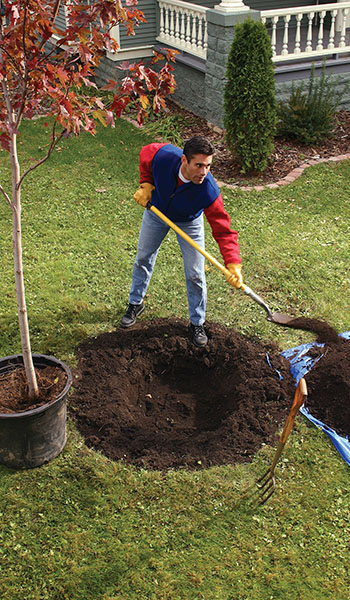

Caution: A few days before you dig, call 811 to have your underground utilities marked.
The ideal time to plant a tree is in early spring before “bud break” or in the fall before the tree goes dormant. Cool weather allows the tree to establish roots in its new location before new top growth puts too much demand on it. Some trees establish better if planted in early spring. These include oaks, pines, dogwoods, American holly, willows and black gum. Avoid planting trees during the summer when they’re in full leaf and susceptible to heat stress.
Dig a saucer-shape hole three to five times the diameter of the root-ball (or the spread of the roots for a bare-root tree). This allows the roots to easily penetrate the softened backfill and properly anchor the tree.
If you’re planting in clay or wet soil, use a garden fork or your spade to roughen the bottom and sides of the planting hole to avoid “glazing.” Glazing happens when the sides and bottom of a hole become so smooth and compacted that water can’t pass easily through the soil. In extreme situations, it could block roots from penetrating the sides of the planting hole.